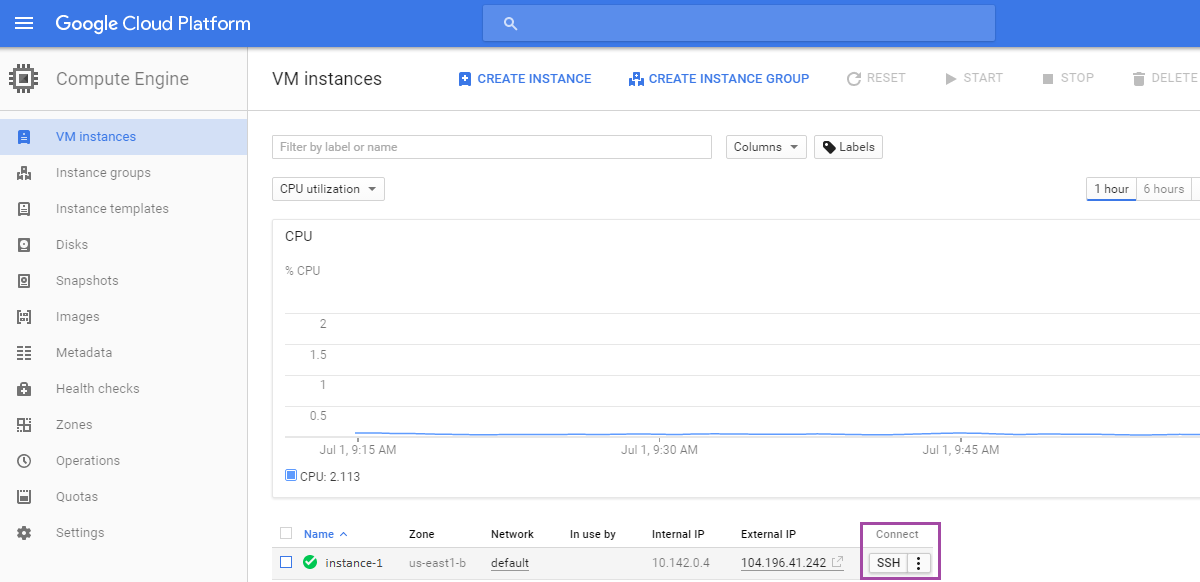DISCONTINUATION OF PROJECT.
This project will no longer be maintained by Intel.
This project has been identified as having known security escapes.
Intel has ceased development and contributions including, but not limited to, maintenance, bug fixes, new releases, or updates, to this project.
Intel no longer accepts patches to this project.
This repository is no longer being actively maintained by Intel. Work has instead shifted to the snap-integration-kubernetes repository.
- Prerequisites
- Start work with Google Cloud Platform
- Install kubesnap
- Contributing
- License
- Acknowledgements
- Kubernetes cluster - tested with Kubernetes on Google Cloud Environment (GCE)
- go to https://console.cloud.google.com/
- log in using your e-mail address
- follow the instruction how to create a Cloud Platform Console project
-
select Products & Services from GC Menu in the top left corner
-
and then select Compute Engine from the drop-down list
-
set the instance name
-
choose a machine with at least 4 vCPUs and at least 15GB RAM
-
select Ubuntu 16.04 with standard persistent disk with at least 100GB
- click on SSH to open the VM terminal (it will open as a new window)
-
manage credentials for the Google Cloud SD. To do that, run the following command:
gcloud auth loginAnswer
Yto the question (see below) and follow the instructions:- copy the link in your browser and
- authenticate with a service account which you use in Google Cloud Environment,
- copy the verification code from browser window and enter it
-
check if you are on credentialed accounts:
gcloud auth list
Clone kubesnap into your home directory:
git clone https://github.com/intelsdi-x/kubesnap
Go to kubesnap/tools:
cd kubesnap/tools
Provision kubesnap (it takes approximately 35 minutes on a VM with 4 vCPUs and 15 GB of RAM in us-central1-b zone):
./provision-kubesnap.sh
We love contributions!
There's more than one way to give back, from examples to blogs to code updates. See our recommended process in CONTRIBUTING.md.
And thank you! Your contribution, through code and participation, is incredibly important to us.
snap, along with this kubesnap, is an Open Source software released under the Apache 2.0 License.
- Authors: Izabella Raulin, Marcin Olszewski, Marcin Krolik, Andrzej Kuriata






